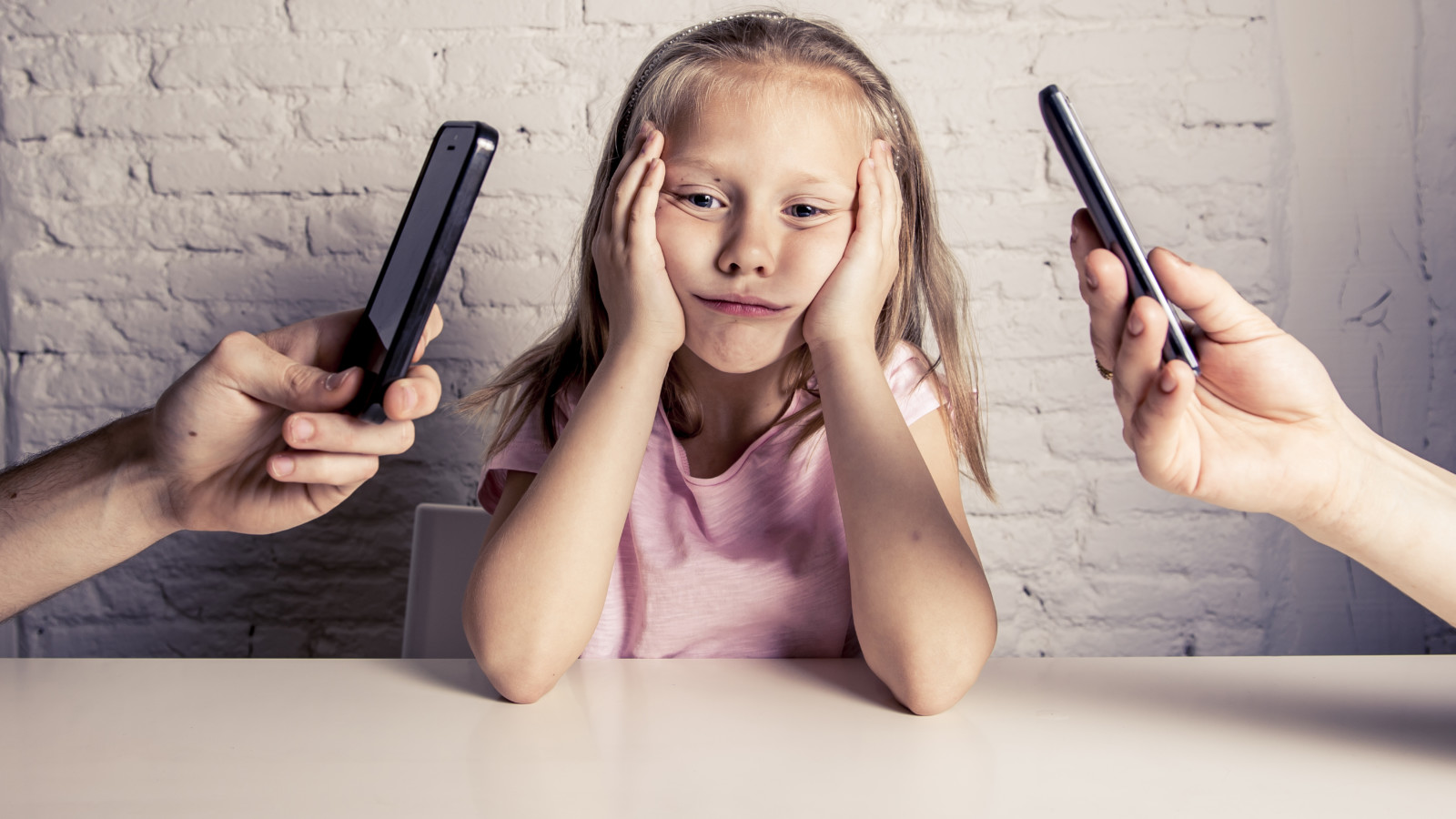It’s Friday evening and after a particularly long workweek you’ve finally sat down on the sofa to relax. You’re exhausted and if it were up to you, you’d lock yourself in the basement and tune into the game, any game, just to unwind. But you’re a parent and you can’t just put your child on pause while you take a much-needed break. So, you do the next best thing and set them up beside you with their favorite movie and pull out your phone. You’re together physically, but mentally and emotionally you’re miles apart.
As a parent myself, I understand the allure of technology as both a babysitter and personal refuge. But let’s take a moment to imagine the same situation, from your child’s perspective:
You’ve been waiting all day to tell your Dad about a cool new karate move you learned today. He finally walks in the door, but before you can demonstrate your awesome new move he tells you to wait until after dinner, and you do. Then once dinner is done, you excitedly start to demonstrate the move only to look up and find he’s not even watching you; he’s looking at his phone. You feel sad, dumb, and rejected, so you give up and go to your room where there’s no risk of being ignored.
Now, this exercise isn’t designed to make any parent feel guilty for having experienced a similar situation. Rather, it’s meant to open our eyes to what is going on around us while we are focused on our phones and how we can be more present with our children.
We now touch our phones (tap, swipe, and click) an average of 2,617 times each day and each time we do so, we withdraw from our physical environment in some capacity. This phenomenon is known as “phubbing” or “phone snubbing” and is defined as our tendency to ignore someone we are physically with to look at our phones. As an adult, this likely happens to you multiple times a day, whether you’re trying to talk to your partner at home or hold the attention of a colleague at work. However, just because it’s become the norm, doesn’t mean the person on the receiving end of a “phub” feels okay about the rejection — and the effects can be particularly troubling for our children.
A recent study published in the Journal of Adolescence found that there was a positive correlation between the time a parent spends on their phones (in the presence of their children) and that child’s likelihood of developing depression. While another study found that 32% of children reported feeling “unimportant” when their parents used cellphones during family time. Not only are these statistics troubling from an emotional standpoint, but the rejection that accompanies being “phubbed” can actually cause our children pain as their brains process the emotional rejection in the same way as physical pain.
No parent would choose to cause this type of distress in their children, but at the same time we need our smartphones for work, communication, and entertainment. So, rather than viewing smartphone use as an all-or-nothing equation, let’s reframe it as a matter of intention or purpose. There’s nothing inherently bad about picking up your phone to look something up or respond to a text. It’s something we all do. The issue arises when we mindlessly grab our phones out of habit and allow ourselves to get sucked into the attention-grabbing vortex without intention or limitation.
The good news is that with a bit of self-reflection and boundaries you can become more mindful of your phone use and be more present when it matters. Here’s how:
Reflect On Your Habits: Most of our habits center around a trigger and reward. When it comes to our phones, the trigger can be anything from boredom to anxiety, to overwhelm. Regardless of the reason, when we pick them up, we are rewarded with a funny video or an update from a friend. Sometimes the reward makes us feel validated and other times the reward is simply to escape reality for a moment. To uncover your trigger, make note of how you are feeling the next time you feel the urge to reach for your phone. Once the trigger has been identified you can work to replace the reward with a healthier alternative.
Find an Alternative: Let’s assume your trigger is overwhelm and your reward is distraction. Instead of reaching for your phone to distract yourself from your endless responsibilities, take a moment to write down everything that’s swirling around in your head. That work deadline that’s been weighing on you. Write it down. Haven’t spent enough one-on-one time with your partner? Write it down. Stressed about money? Write it down. Once all of your stressors are jotted down, schedule a time to pick them back up. This is often referred to as ‘worry time’ and can help you manage your anxieties by allowing you time to indulge in your worries without letting them consume your entire day.
Set Digital Boundaries: Setting digital boundaries has always been challenging and this year made it even more difficult as nearly every aspect of our lives shifted online. Now that our lives are returning to normal, it’s a great time to re-establish the digital boundaries in your home. These will look different for every family but can include things like no phones at the dinner table, placing your phone in a different room a few hours before bedtime, or daily screen-time limits. Once you’ve determined your boundaries, put checks in place (like screen-time apps) to hold yourself accountable and avoid falling back into old patterns.
The balancing act between screen-time and parenting may be one of the most difficult challenges to face the modern parent. Fortunately, once you understand why you reach for your phone, it’s easier to resist the temptation and refocus your attention on what matters — like that cool new karate move!


